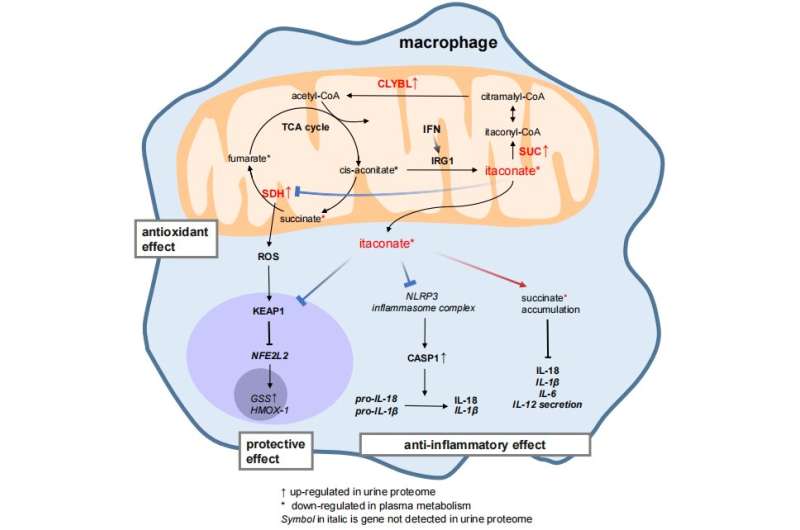
In the very beginning of the COVID-19 outbreak (February, 2020), a proteomics expert, Dr. Jun Qin and a clinical doctor, Dr. Zhongde Zhang, who worked on the front lines of COVID-19 research, wondered whether they could find clues as to what happened to living COVID-19 patients at the molecular level. As urine can be readily obtained from living people, they teamed up to look at all kinds of proteins in the urine.
By applying LC/MS-MS-based proteomics, scientists analyzed 317 urine proteomes from 86 COVID-19 and 55 pneumonia patients and 176 healthy controls, they identified 4,255 proteins from the urine, in which proteins with functions of immune and metabolism were among the most significantly altered after SARS-CoV-2 infection.
It was exciting and reassuring to find proteins in the anti-virus response pathway from the urinary proteome, including the up-regulated dsRNA detector DDX58/RIG-I, the virus response specific transcription factor STAT1, and a collection of ISG proteins. This suggests that urine may provide a window for us to see what is happening inside the human body. Trawling through the data, scientists came across an under-studied protein, CLYBL, which was not included in the commonly used database for annotation in bioinformatics. CLYBL, a citramalyl-CoA lyase, catalyzes the transition of itaconate to acetyl-CoA in the TCA cycle. Thus, increased CLYBL indeed led to the consumption of anti-inflammatory metabolite itaconate in COVID-19 patients. As Itaconate was shown to play an important role in antioxidation, cellular protection, and anti-inflammation, these observations led to the speculation that supplement of itaconate along or with inhibition of CLYBL might be possible therapeutic options for treating COVID-19 patients.
By comparing the proteomes of the early-disease-stage patients whose conditions later turned severe with those of the patients who remained moderate across disease progression, the team identified a number of proteins, which may predict the transition from moderate to severe disease in COVID-19 progression. Increased levels of CD14, RBP4, SPON2, GMFG, SERPINA1, SERPINB6 and SERPINC1 in severe COVID-19 patients and their known biological functions suggested that macrophage-induced inflammation and thrombolysis may play a critical role in worsening the disease.
The current study showed that the urine proteome contained clues to what is happening inside the human body. It is a convenient source of biological samples that can be obtained from living people under physiological and pathological conditions. Peeking through the urine proteome, one can find signaling pathways as well as potential drug targets. In this specific COVID-19 case, the finding that the endogenous immune-modulating metabolite itaconate as a potential therapy option for treating the disease is particular timely, as an immune modulating therapy is independent of mutating virus.
Source: Read Full Article
